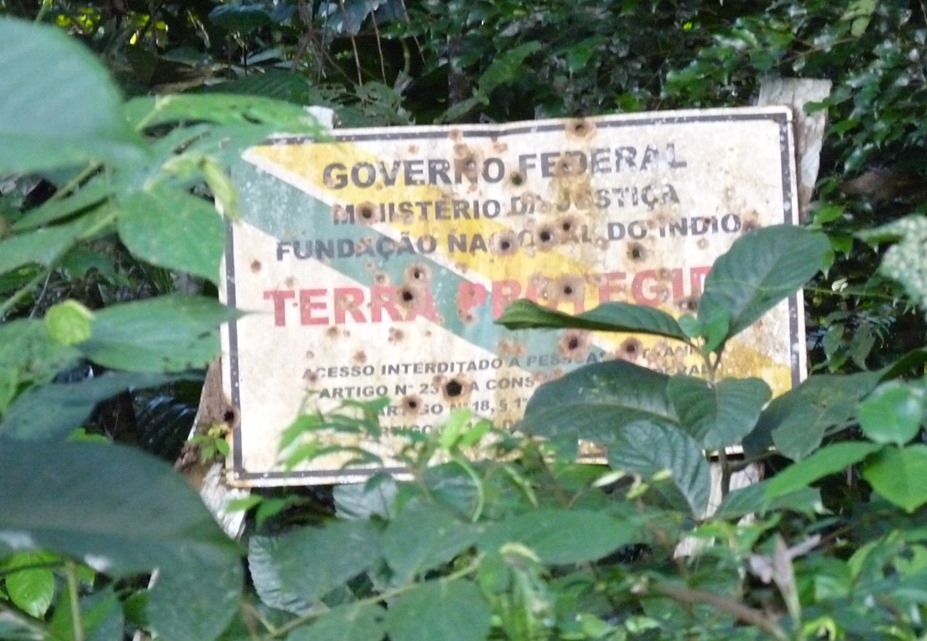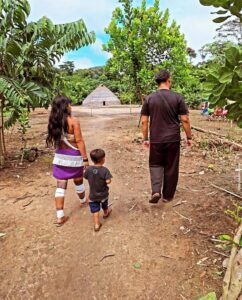A Rondônia politician announced the revision of the territory's limits in a misleading statement that could encourage new invasions and worsen conflicts in the region.
Rondônia's federal congressman Lúcio Mosquini (MDB) made a public statement at an event with cattle ranchers at the end of March, claiming to have "achieved the reduction of an indigenous land", the Uru-Eu-Wau-Wau territory, which is home to six different indigenous peoples, two of whom are uncontacted, and there may be others as yet unconfirmed. The politician's statement is seriously misleading and could lead to more invasions in the area and worsen the conflicts that already exist.
In response to Mosquini, indigenous leader Tambura Amondawa in the same event denied any possibility of reducing portions of the indigenous land in favour of invaders. "I couldn't remain silent. I'm going to warn you that the indigenous land will never, ever, be reduced. There is no law that regulates this," he said. The response makes it clear that the politician has made a mistake - which could have serious consequences - by misinterpreting a review of demarcation markers with a reduction of the land area.
The National Institute for Colonisation and Agrarian Reform (INCRA) has requested that an adjustment be made to a physical landmark, but the National Foundation for Indigenous Peoples (FUNAI) has not yet decided about it because there are legal controversies about the possibility of changing the boundary. It is common at election time for politicians, especially in the Amazon, to take advantage of territorial disputes to gain support among voters in the region with promises of lands that are in fact the exclusive preserve of indigenous peoples.
In a region already marked by serious conflicts, with invaders threatening various regions of the Uru-Eu-Wau-Wau Indigenous Land, the situation could get much worse if they are led to believed that a change in the boundaries could benefit them. The expectation of land rights created by this kind of discourse is historically what drives violence against indigenous people and invasions of their lands. In addition, among the priority actions to be carried out in the territory is the removal of invaders, determined in the context of the Action for Non-Compliance with Fundamental Precept (ADPF) 709, which is being considered by the Federal Supreme Court (STF). In other words, the priority determined by the country's highest court is the removal of the invaders and not the regularisation of invaded areas.
The Uru-Eu-Wau-Wau Indigenous Land was among the most deforested during the previous government and is constantly under pressure from invaders. The territory is surrounded by cattle ranches and soya plantations, and 1,200 hectares were deforested in 2019 alone. Besides the priority removal of the invaders, no change to the boundaries of indigenous lands can be made without consulting the peoples affected, under ILO Convention 169.
In the region where INCRA has asked for the boundaries to be revised, there are Jupaú and Amondawa villages. Near them are the territories of the isolated Irure'iëa (Jurureí) indigenous people, who are more vulnerable to the presence of invaders and who have already suffered expulsion from various areas since colonisation was imposed in the region. In order to control the situation, in addition to removing invaders, it is also necessary to strengthen the initiatives of indigenous associations and the Uru-Eu-Wau-Wau Ethno-Environmental Protection Front, FUNAI's decentralised branch that operates in the region. These measures taken in collaboration with the peoples who live there are fundamental for containing the threats.




